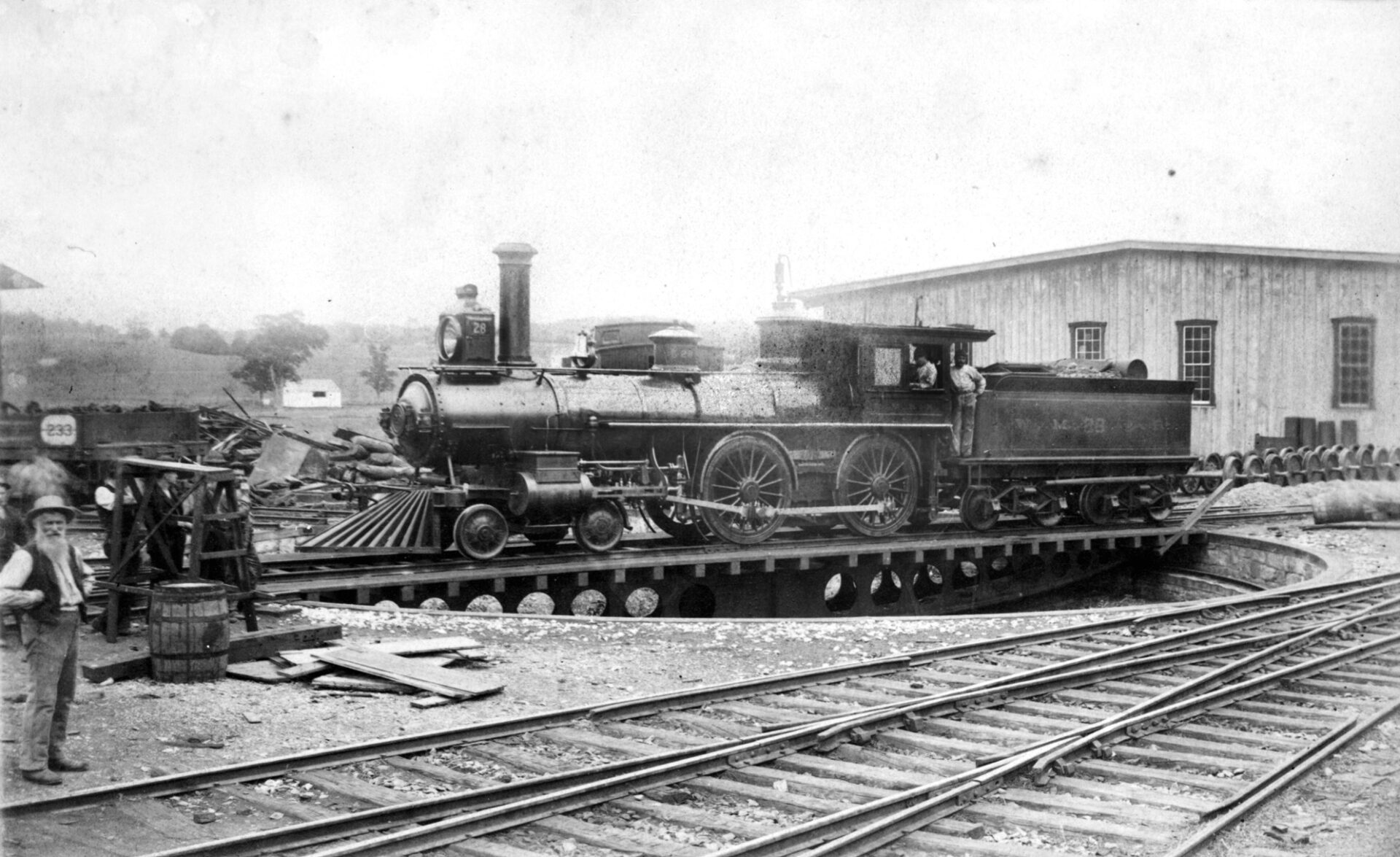Carroll Yesteryears
18 October 2009
Railroad Boosted Region’s Reach
by Mary Ann Ashcraft
Serious construction of the Western Maryland Rail Road began in July 1857 with two gangs of workmen laying track – one from Owings Mills toward Westminster and the other from Union Bridge toward New Windsor. Track into Baltimore was still needed, but that came a bit later.
Plans called for equipping the line with 2 locomotives of 20 and 25 tons, 2 passenger cars capable of carrying 50 people each, 15 large freight cars and 5 smaller ones, plus 27 other specialized cars. Nathan Haines looked carefully at the kinds of freight likely to be transported – lime, iron ore, wood, bark, leather, hides, coal, lumber, groceries, dry goods, etc. – and estimated that the railroad could earn between $80,000 and $100,000 annually. The financial picture appeared good enough that Baltimore investors were persuaded to join people from Carroll County in underwriting the new line.
On August 11, 1859 the first 10-mile stretch of Western Maryland track between Relay House and Owings Mills was opened with much fanfare – a band, special guests riding in a new car, a sumptuous banquet with champagne and toasts all around…but all of this took place in Baltimore County. It would be another twenty-two months before there was service to Westminster.
What excitement the trains caused when they finally arrived! The American Sentinel reported, “On the arrival and departure of each train persons unaccustomed to witness the eager and excited crowd rushing to the depot, would suppose that some great event was about transpiring, or that the ‘year of jubilee’ was actually opening upon us.” There weren’t enough cars for everyone who wanted to make an “inspection tour,” but if you did get aboard, you might enjoy entertainment by a band or two!
Everything wasn’t perfect, however. Businessmen and newspaper readers complained that mail service wasn’t as reliable as when the turnpikes were used. Trains jumping the tracks could cause hours of delay. Nevertheless, the Western Maryland Rail Road, agonizingly slow to get started, finally was open to Union Bridge by 1862 – well ahead of the deadline of 1868. The next goals became Hagerstown and Williamsport.
During the early summer of 1863, the WMRR had plenty of business bringing supplies for General Meade and his Union Army fighting at Gettysburg. There were also many cars departing full of wounded soldiers and Confederate prisoners of war.
By 1873, the tracks had reached Williamsport and covered 90 miles, but the line was in grave financial condition in spite of increasing its rolling stock and establishing shops at Union Bridge to repair and build equipment. A dynamic president, John Mifflin Hood, took over the company in 1874 and turned things around. During his 28-year tenure, the railroad “grew from a local line into an important regional road. Its heavy-duty engines were doing their share of hauling the essential materials of industry – lumber, coal, ore, steel…”
Carroll County was served by the Western Maryland for over a century. Today the Maryland Midland Railway operates over about seventy miles of the old Western Maryland main line hauling, among other freight, the products of Lehigh Portland Cement Company.
Mary Ann Ashcraft is a library volunteer at the Historical Society of Carroll County.
Photo credit: Historical Society of Carroll County

Photo caption: A Western Maryland Rail Road locomotive sits on the turntable of the company’s Union Bridge maintenance shop in this photograph taken circa 1876.





